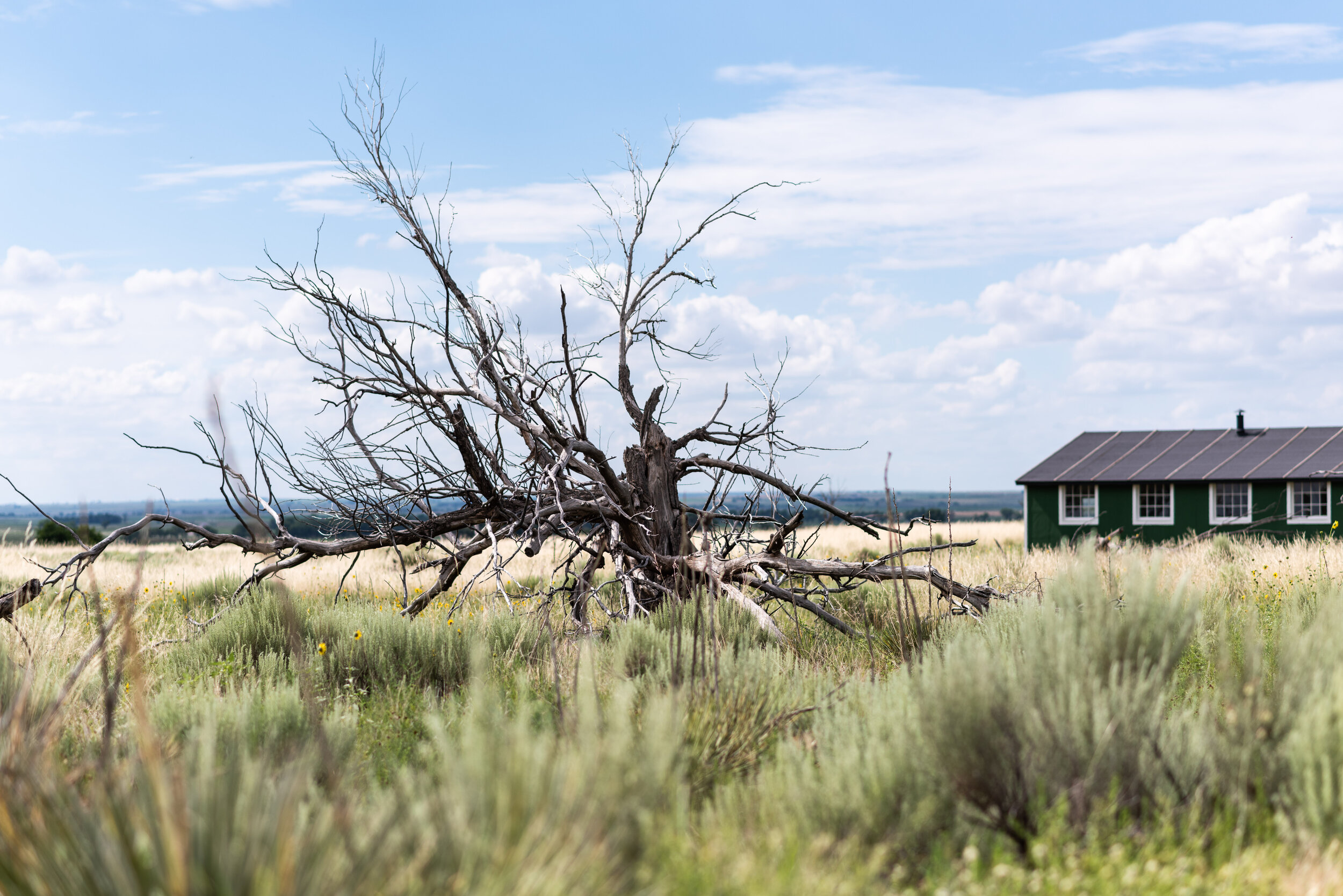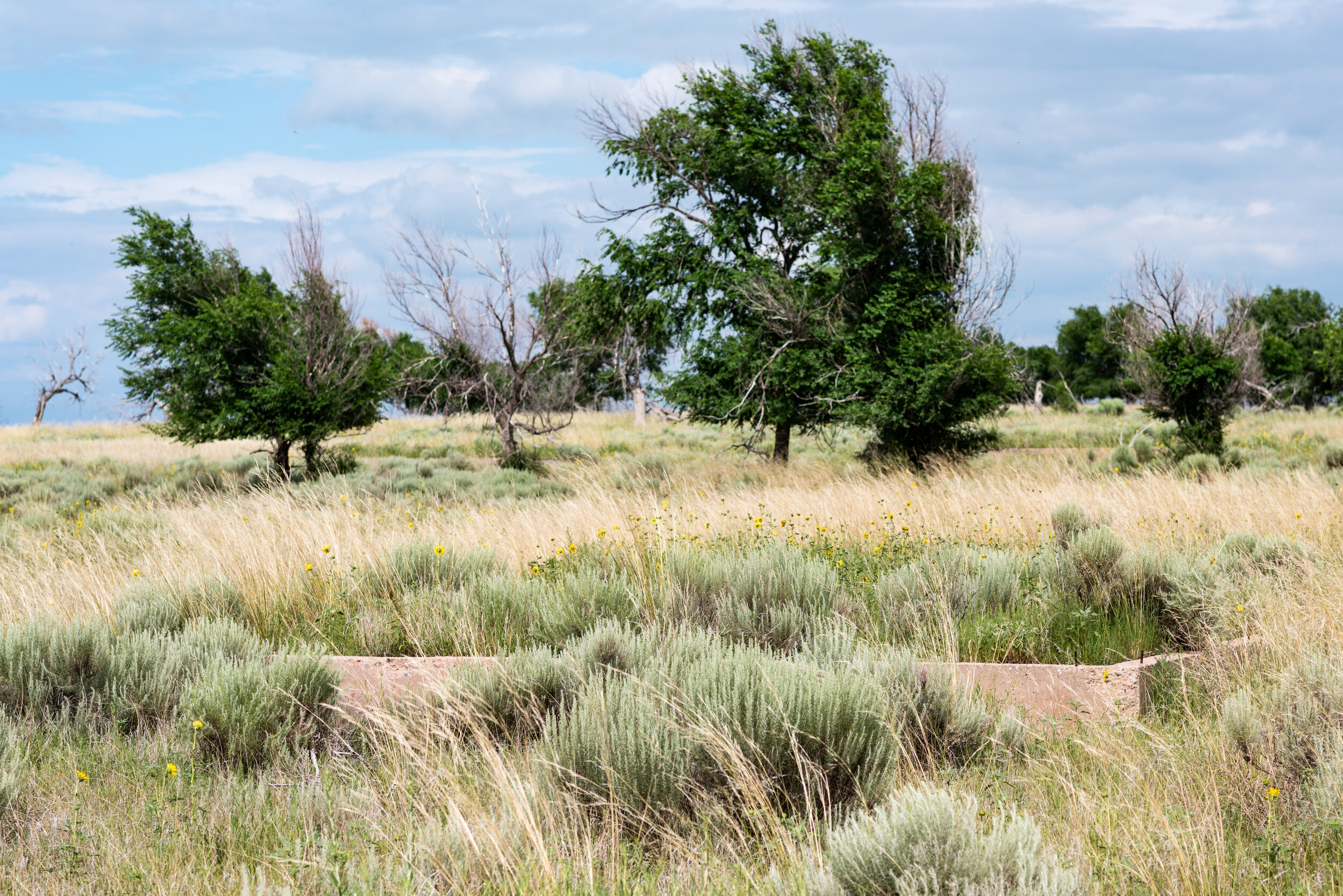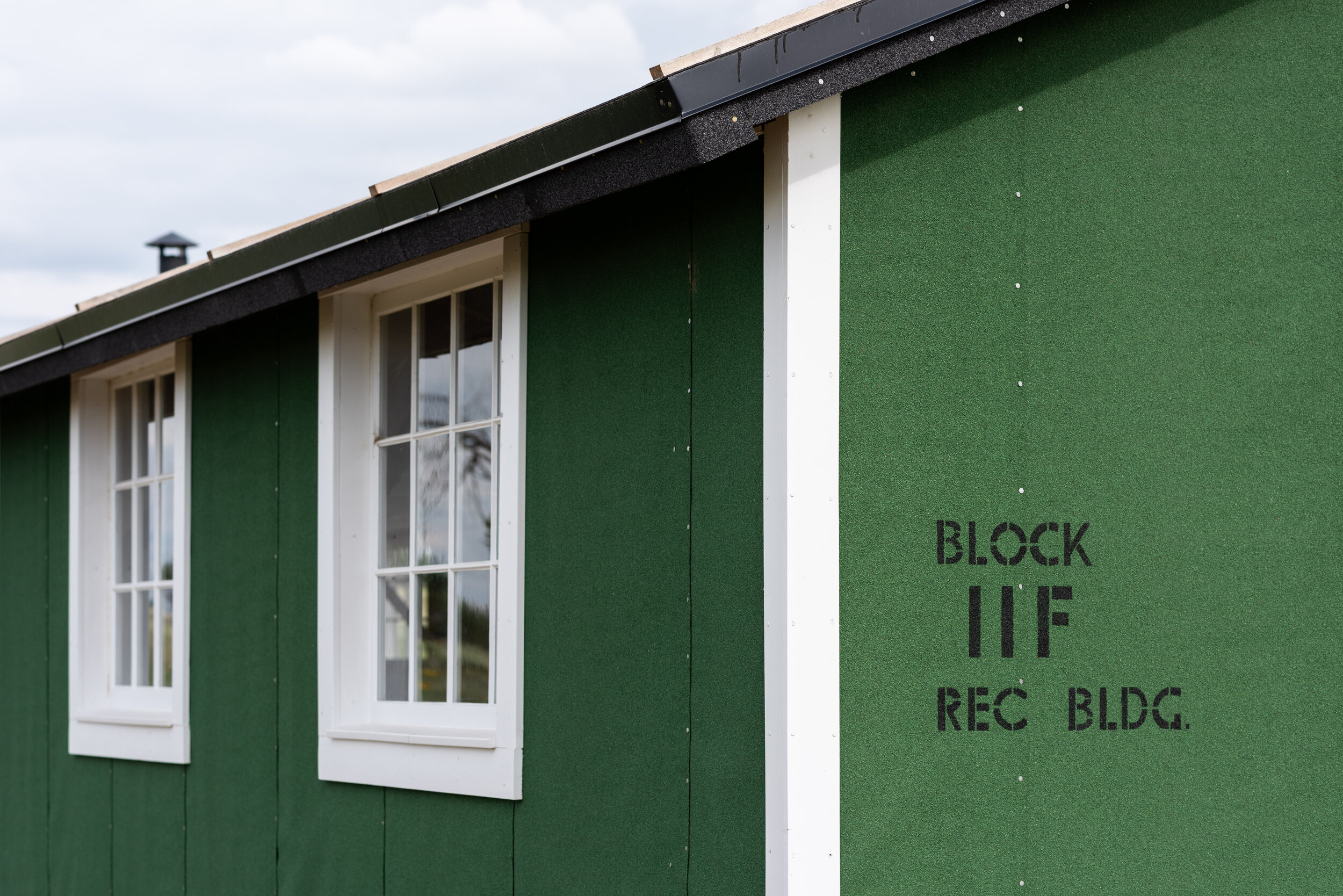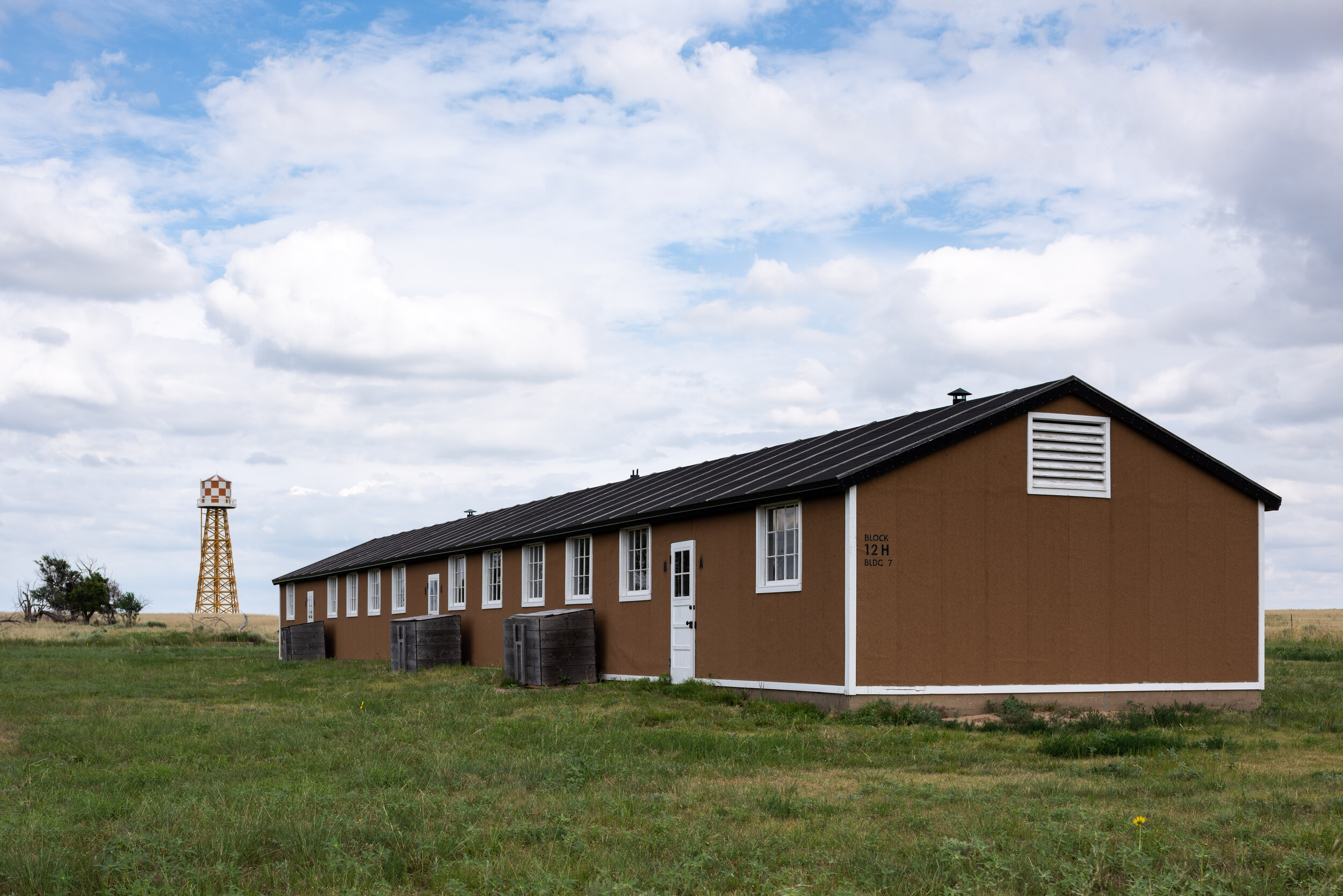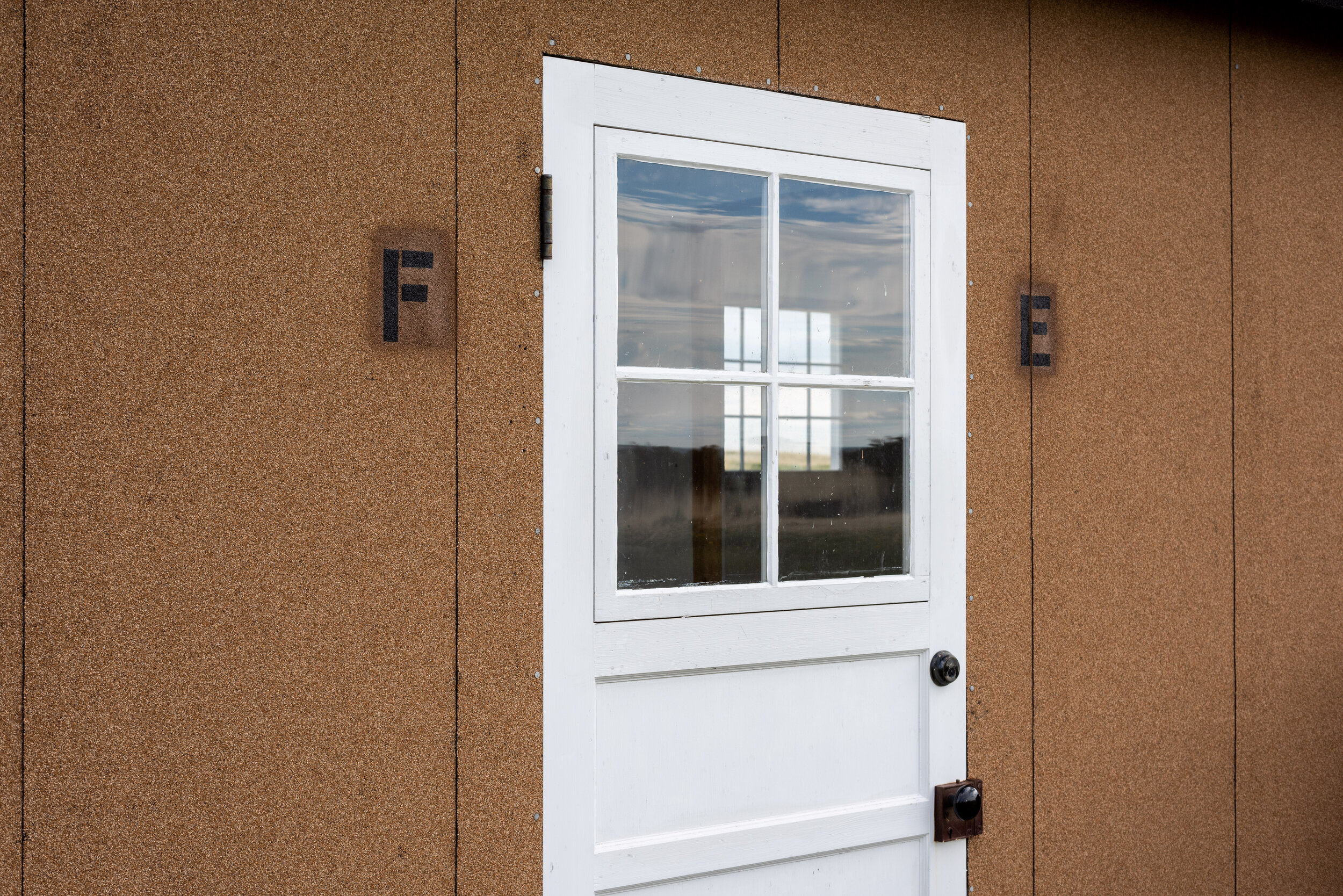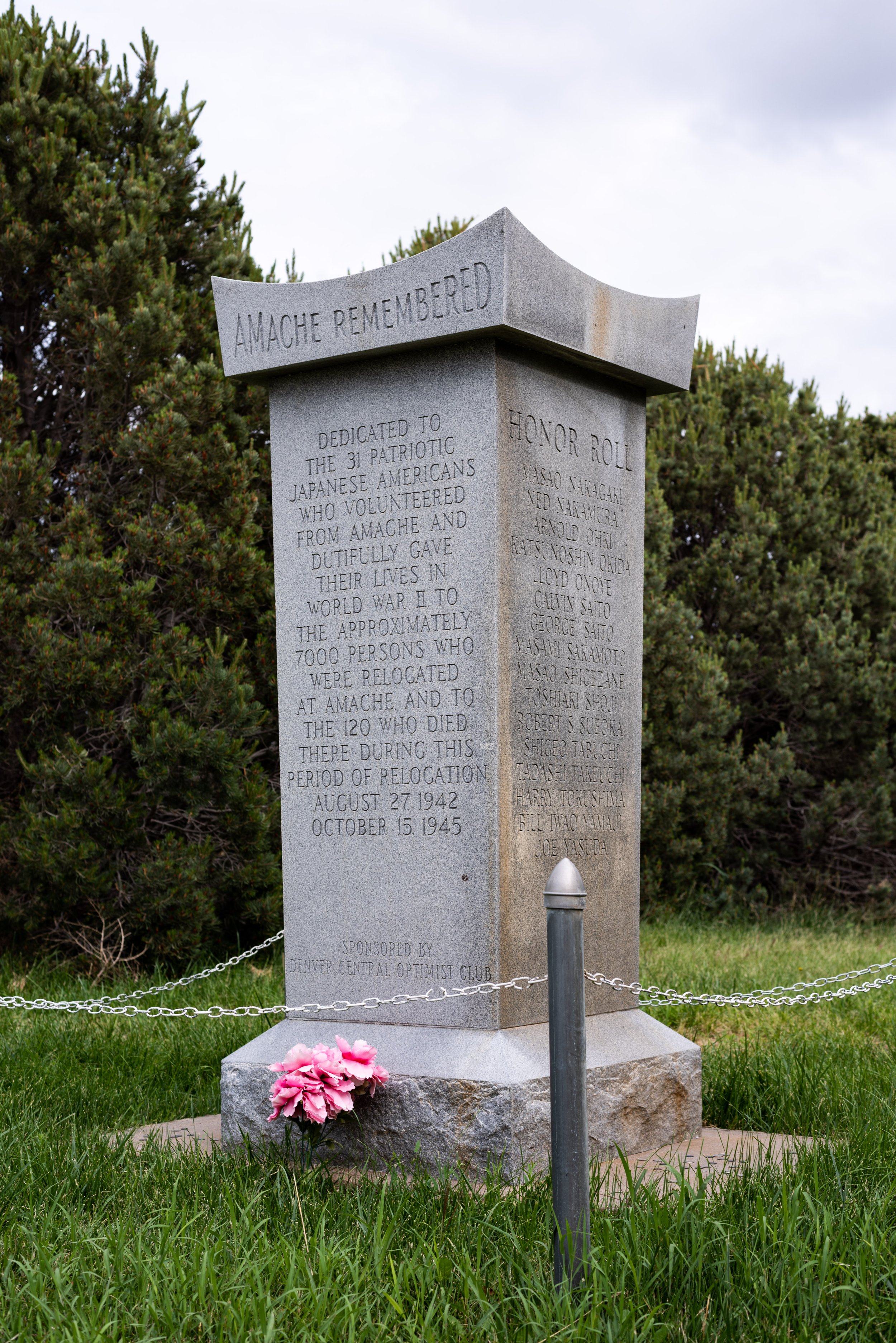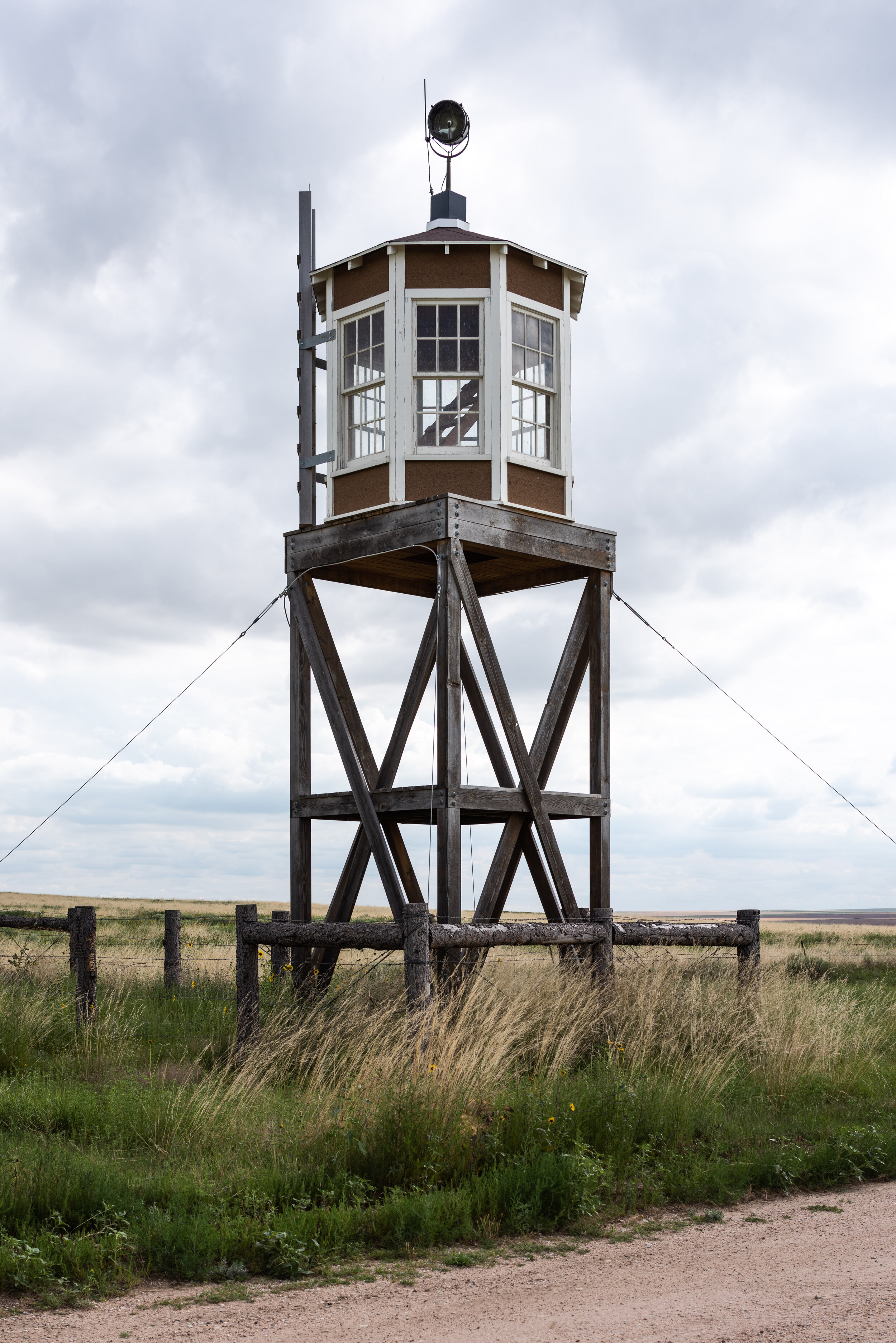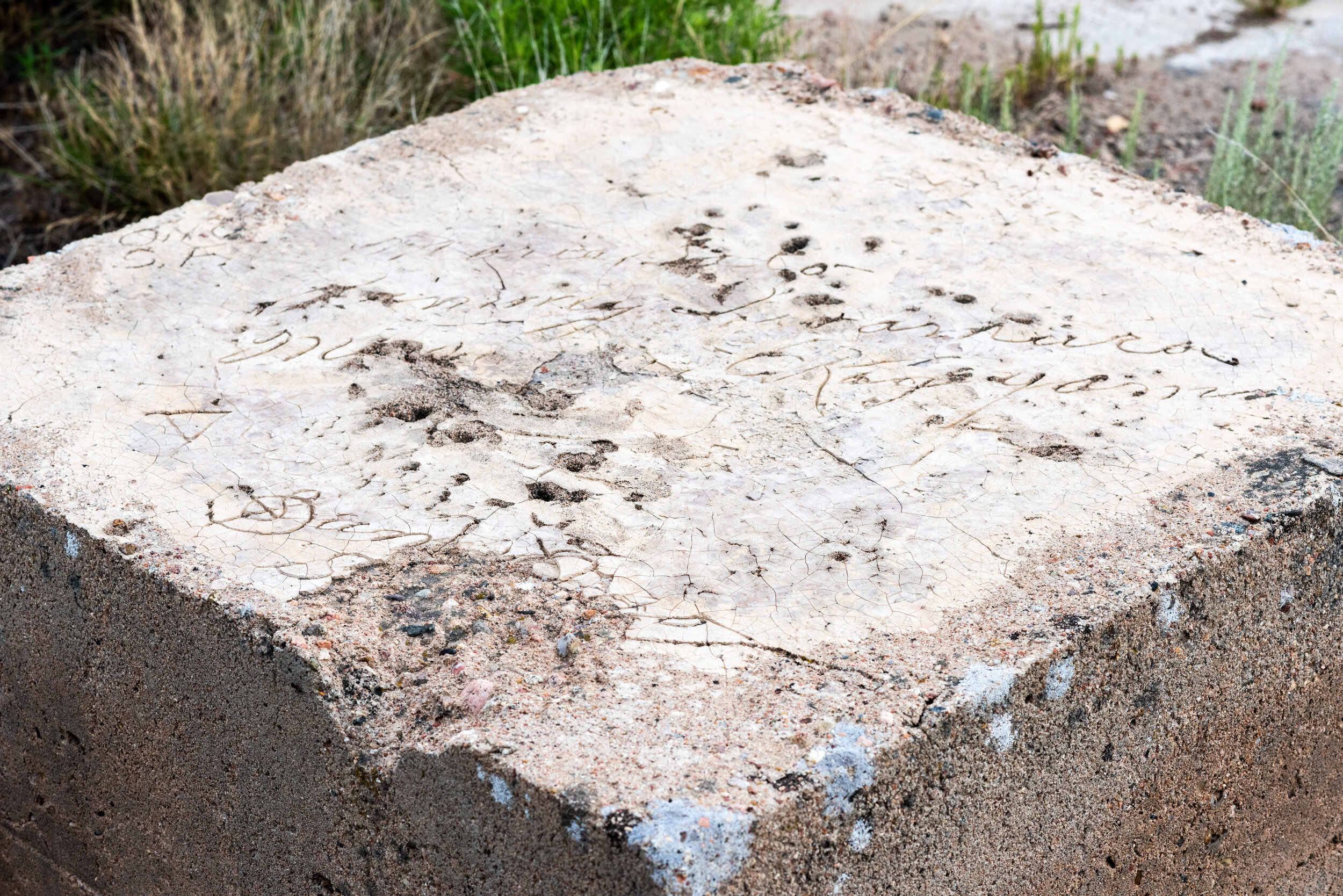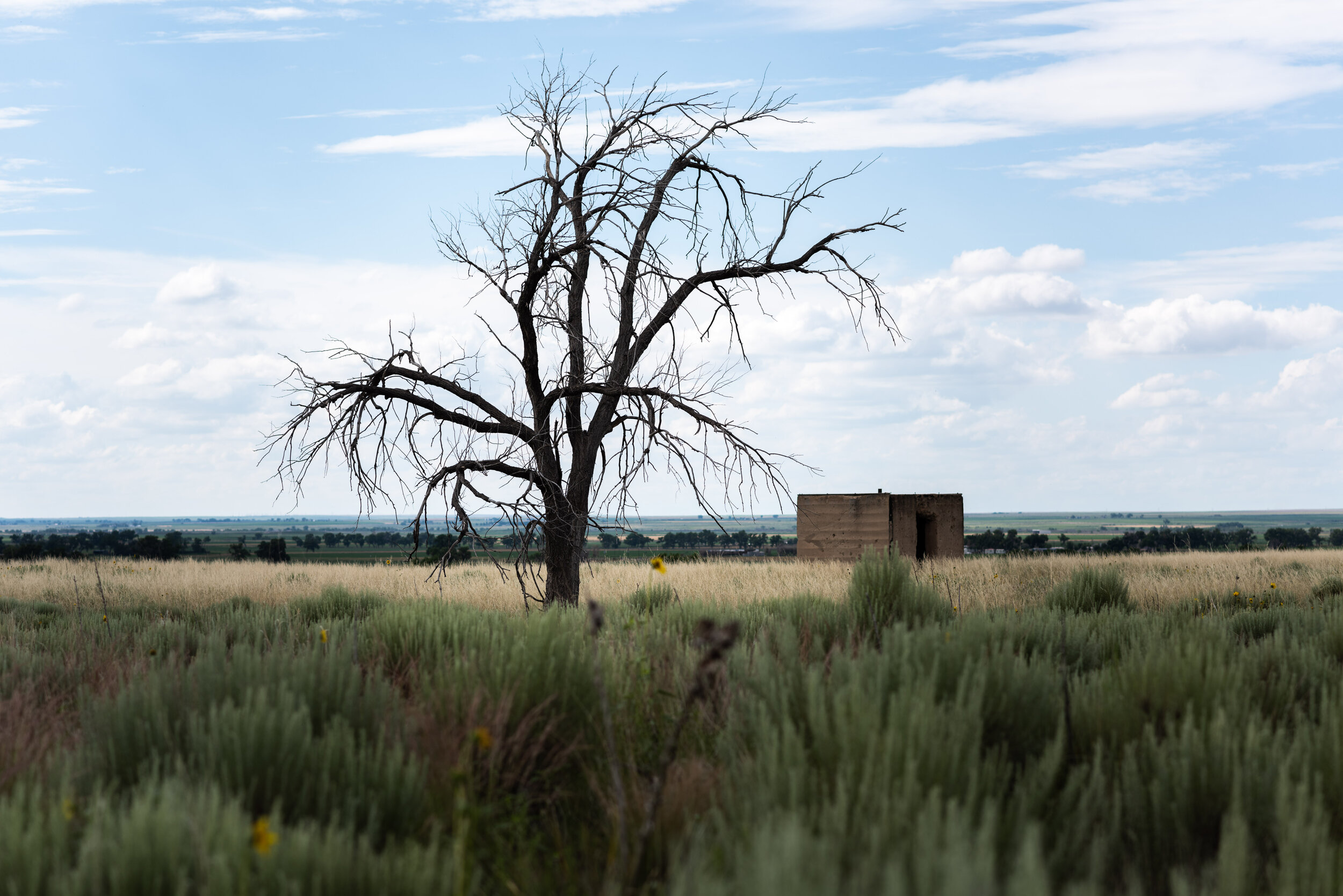Amache Internment Camp
Granada, Colorado | 1942 - 1945
On December 7th, 1941, the Empire of Japan launched a surprise attack against United States forces anchored at Pearl Harbor, Hawaii. “A day that will live in infamy”, Pearl Harbor marked the United States’ entry into WWII and set in motion the events which would lead to the forced relocation and internment of over 7,000 Japanese Americans at the Amache Internment Camp in Granada, Colorado via Executive Order 9066. Work at Amache would begin in June 1942 and the camp would officially close in October 1945.
Located about a 3.5 hour’s drive from Colorado Springs, Granada is a small farming town situated along US-50. The 16 square-mile site chosen for the camp contained the workings of a small city, and the population of internees vastly outnumbered the 342 local residents listed on the 1940 census. The primary employment opportunity of the camp was agriculture, where internees would either work the fields at Amache or be leased out to nearby farms. A daily budget of 45¢ (later reduced to 31¢) per internee was allocated to feed the camp’s population through centralized mess halls in each block. Along with food grown in the fields, an on-site root cellar, cannery, and meat processing center helped feed internees and soldiers abroad. While there isn’t much left of Camp Amache today beyond the concrete foundations which stand witnesses to the camp’s history, access roads are maintained and the site is open for visitors.
The entrance to Amache is marked by a small wooden sign just off US-50 East. From an aerial viewpoint, it’s easy to see the grid of dirt roads, concrete pads, and crumbling foundations of the camp. At ground level the structures are much harder to spot, hidden behind the rolling terrain and foliage. Looking closely amongst the camouflage of brush, you can spot the concrete foundations which made up the 29 residential blocks, each encompassing 12 barracks, a mess hall, laundry facilities, a bath building, and a recreation hall. There are 4 structures on the site which you can see today: a barracks building, a restored and relocated recreation hall, guard tower, cemetery, and the original water tower which sits atop the highest point on the property. Both the recreation hall and water tower were purchased post-WWII and relocated elsewhere after closure of the camp. The Amache Preservation Society subsequently rescued and restored these structures to their original locations. A total of 8 machine-gun equipped guard towers kept watch over the internees, though no escape attempts occurred at the camp. You can see a reconstructed guard tower at the camp today.
The internees of Camp Amache did everything they could to make their new surroundings more homely. Restricted to one suitcase per person, most personal belongings had to be left behind in California or hastily sold off. The accommodations at Camp Amache were spartan at best, with residents scavenging scrap wood to construct furniture for their living quarters. Barracks were built of cheap particle board with tar paper roofs. The only furnishing provided in the barracks themselves were a bare bulb for lighting, a small coal stove for heat, and a canvas cot for each inhabitant. Any sense of privacy evaporated when internees reached Amache. While most War Relocation Authority (WRA) camps were plagued by flooding, Camp Amache faced by high winds and dust storms. Internees would sweep the floors of their apartments only for dust to blow right back in through the cracks in the wall.
Camp Amache had all the facilities you’d expect of a small city: neighborhood schools, a police station, a fire department, a 150-bed hospital, a dentist office, it’s own newspaper, and a store. The co-op, established in 1943, contained watch repair facilities, an optometrist, a beauty parlor, and a barber shop among other things. A silk screen shop, unique among internment camps, cranked out posters for the war effort. Surplus food grown at the Amache was sent to other internment camps and to the front.
Despite being relocated and held against their will, there were a surprising number of patriotic activities at the camp. There were multiple Boy Scout troops and 4th of July parades during the summers. 953 Amache residents served their country during the war, and 31 paid the ultimate price. Their names are enshrined on a granite marker in the cemetery. Most people buried in the cemetery were disinterred and relocated elsewhere after the war. Marked by nondescript granite headstones, 8 graves remain today.
Beyond the structures I mentioned previously, not much is left at the site today. Buildings like the Amache High School, whose cost and outward appearance caused national uproar and accusations of “codling” internees, were not built to last. The cheap particle board, flimsy as it might’ve been, was still in high demand given the post-war materials shortages facing the United States. Some buildings were purchased by the surrounding communities and are still in use today as storage space, garages, town halls, and apartments. While the structures themselves might be gone from Amache, there are still traces of humanity throughout the campus. The concrete pad, pictured above, was built as a base for a water heater in the bath building of block 9L. A number of internees who helped to construct the camp, like Sam Masami Ono, signed their names in the drying concrete. Blocks 6H, 7K, and 8F had Japanese gardens, built by internees trying to make the best of a terrible situation and restore some sense of normalcy to their lives by creating gathering places.
My visit to Camp Amache wouldn’t have been possible without the hard work of the Amache Preservation Society. They run a small museum in town which I wasn’t able to visit, but consider making a donation like I did through their website if you’d like to support their mission to ensure the memories of Camp Amache are not lost. They’ve worked hard to restore buildings, create educational materials, and preserve the legacy of Amache Internment Camp.

